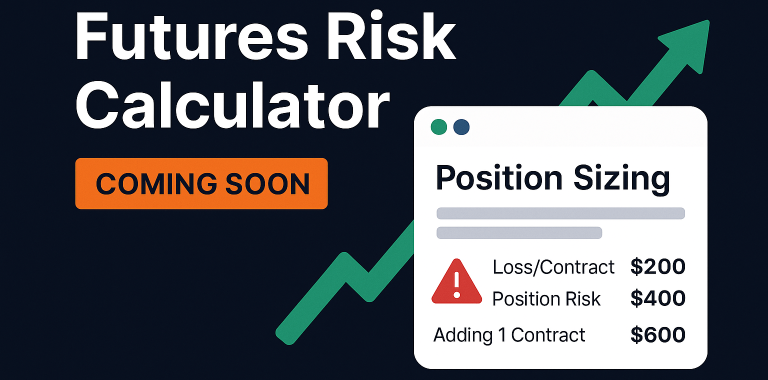Complete Beginner’s Guide to Trading
Never traded before? Start here. We’ll get you from zero to your first trade without the overwhelm.
Forget everything you’ve heard about trading. Most of it’s wrong, designed to sell you courses, or written by people who’ve never actually made money trading. This guide cuts through the noise with what you actually need to know.
Should You Even Start Trading?
Honest Reality Check
Trading is not:
- A get-rich-quick scheme
- A replacement for your job (at first)
- Easy money from your couch
- Something you’ll master in a week
Trading can be:
- A legitimate way to grow wealth over time
- A source of additional income with proper education
- Intellectually rewarding if you enjoy learning markets
- Profitable if you treat it like a business
Do You Have What It Takes?
You might be ready if you:
- Can afford to lose your starting capital completely
- Have 6+ months of living expenses saved separately
- Can control your emotions under pressure
- Are willing to study and practice before risking real money
- Understand that most beginners lose money initially
You’re definitely not ready if you:
- Need this money for bills or expenses
- Think trading will solve your financial problems quickly
- Can’t handle losing money without panicking
- Want to skip learning and jump straight to profits
What Is Trading, Really?
The Simple Version
Trading is buying and selling financial instruments (stocks, currencies, etc.) to profit from price movements. You buy when you think prices will go up, sell when you think they’ll go down.
The Reality Version
Trading is:
- 80% psychology – Managing your emotions and discipline
- 15% risk management – Protecting your capital
- 5% strategy – The actual buying and selling decisions
Most beginners focus only on strategy and wonder why they fail.
Types of Trading (Pick One to Start)
Stock Trading
What it is: Buying shares in companies Time commitment: Minutes to years per trade Best for: Beginners who understand businesses Starting capital: $500-1,000 minimum Learn more: [Stock Trading Guide →]
Forex Trading
What it is: Trading currency pairs (EUR/USD, etc.) Time commitment: Minutes to weeks per trade Best for: Beginners who want 24-hour markets Starting capital: $100-500 minimum Learn more: [Forex Trading Guide →]
Crypto Trading
What it is: Trading digital currencies Time commitment: Minutes to months per trade Best for: Risk-tolerant beginners Starting capital: $100-500 minimum Learn more: [Crypto Trading Guide →]
Skip these for now:
- Options – Too complex for beginners
- Futures – High risk, margin requirements
- Day trading – Requires experience and full-time attention
Essential Concepts Every Beginner Must Know
1. Risk Management (Most Important)
The 1% Rule: Never risk more than 1% of your account on a single trade Example: $1,000 account = maximum $10 risk per trade Why: Protects you from blowing up your account on bad trades
2. Position Sizing
What it is: How much money you put into each trade Rule: Calculate your risk first, position size second Tool: Use our [Position Size Calculator →] to get this right
3. Stop Losses
What it is: Automatic order to sell if price moves against you Why essential: Limits your losses on bad trades How to set: Determine your risk tolerance before entering the trade
4. Risk-Reward Ratio
What it is: How much you stand to make vs. lose on a trade Minimum ratio: 1:2 (risk $1 to potentially make $2) Why: Lets you be wrong more often and still profit overall
5. Market Orders vs. Limit Orders
Market Order: Buy/sell immediately at current price Limit Order: Buy/sell only at a specific price or better Beginner tip: Use limit orders to avoid paying more than you planned
Your First 30 Days: Step-by-Step Plan
Week 1: Education Phase
Day 1-2: Read this guide completely Day 3-4: Choose your market (stocks, forex, or crypto) Day 5-7: Read our guide for your chosen market
Week 2: Platform Setup
Day 8-10: Research and choose a broker Day 11-12: Open a demo account Day 13-14: Learn the trading platform basics
Week 3: Demo Trading
Day 15-21: Practice with fake money
- Place 10-20 demo trades
- Focus on risk management, not profits
- Test different order types
- Practice using stop losses
Week 4: Go Live (Small)
Day 22-30: Open real account with minimum deposit
- Start with the smallest position sizes possible
- Risk no more than 0.5% per trade initially
- Focus on following your plan, not making money
Common Beginner Mistakes (Avoid These)
1. Starting Too Big
Mistake: Putting $5,000 into your first trades Reality: You will lose money while learning Solution: Start with $100-500 maximum
2. No Stop Losses
Mistake: “I’ll just hold until it comes back” Reality: Sometimes it never comes back Solution: Set stop losses before entering every trade
3. Revenge Trading
Mistake: Making bigger trades to win back losses Reality: This is how accounts get blown up Solution: Walk away after 2-3 consecutive losses
4. Following “Hot Tips”
Mistake: Trading based on Reddit, Twitter, or YouTube tips Reality: By the time you hear it, it’s usually too late Solution: Do your own analysis or avoid individual stock picks
5. Overtrading
Mistake: Making 10+ trades per day as a beginner Reality: More trades = more fees and more mistakes Solution: Quality over quantity – focus on good setups
Essential Tools for Beginners
Free Tools You Need
- Trading platform (from your broker)
- Economic calendar ([Our Free Calendar →])
- Position size calculator ([Free Calculator →])
- Trading journal (spreadsheet or notebook)
Tools You Don’t Need Yet
- Expensive charting software
- Trading courses ($997+ programs)
- Signal services
- Multiple monitors
- Professional news feeds
Choosing Your First Broker
Beginner-Friendly Features to Look For
- Demo account available
- Educational resources included
- Low minimum deposit ($100-500)
- Commission-free stock trades or low forex spreads
- Good mobile app for monitoring trades
Red Flags to Avoid
- No regulation (offshore brokers)
- High minimum deposits ($10,000+)
- No customer support
- Hidden fees
- Promises of guaranteed profits
→ Compare brokers for your chosen market:
- [Best Stock Brokers for Beginners →]
- [Best Forex Brokers for Beginners →]
- [Best Crypto Exchanges →]
Your First Trade Checklist
Before you place any trade:
- [ ] I understand what I’m buying/selling
- [ ] I’ve set my stop loss level
- [ ] I’ve calculated my position size (max 1% risk)
- [ ] I know my profit target
- [ ] I can afford to lose this money completely
- [ ] I’m trading with money I can afford to lose
After the trade:
- [ ] Record the trade in your journal
- [ ] Note why you entered the trade
- [ ] Stick to your stop loss (don’t move it)
- [ ] Don’t check the price obsessively
What Success Actually Looks Like
Realistic Expectations
Month 1: You’ll probably lose money while learning Month 2-3: Breaking even is a win Month 4-6: Small, consistent profits Year 1: 10-20% annual returns are excellent for beginners
Warning Signs You’re Doing It Wrong
- Checking trades every few minutes
- Moving stop losses when losing
- Making bigger trades after losses
- Bragging about winners, hiding losers
- Quitting your job after one good month
Next Steps: Beyond the Basics
Once You’re Consistently Profitable (3-6 months)
- Increase position sizes gradually (still max 1-2% risk)
- Learn advanced order types
- Explore other markets
- Consider swing trading strategies
- Study more advanced risk management
Advanced Learning Resources
- Technical analysis – Chart patterns and indicators
- Fundamental analysis – Economic factors affecting prices
- Market psychology – Understanding crowd behavior
- Advanced strategies – Spread trading, hedging, etc.
Bottom Line: Start Smart, Stay Disciplined
The beginner’s advantage: You don’t have bad habits to unlearn yet.
Keys to success:
- Start small – Protect your capital while learning
- Focus on risk management – Profits follow naturally
- Keep learning – Markets evolve, so should your knowledge
- Stay patient – This is a marathon, not a sprint
Remember: Every professional trader was once exactly where you are now. The difference between those who succeed and those who quit is usually patience, discipline, and proper risk management – not some secret strategy.
Ready to choose your market and get started? Pick the trading style that interests you most and dive deeper:
→ [Stock Trading Guide →] – Long-term wealth building → [Forex Trading Guide →] – 24-hour currency markets
→ [Crypto Trading Guide →] – Digital currency opportunities
No Tilt Trading – Trading Without the Noise

